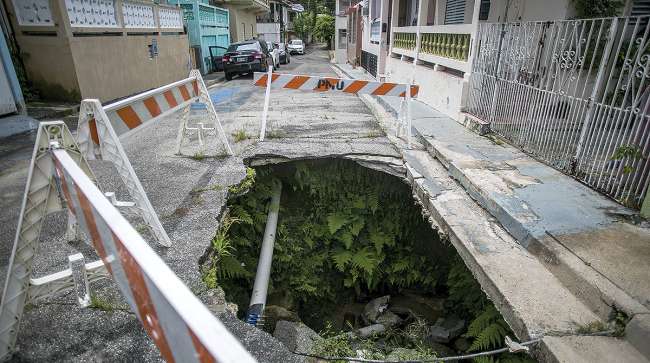Senior Reporter
FEMA Official Touts Disaster Mitigation Program at US Chamber of Commerce

[Stay on top of transportation news: Get TTNews in your inbox.]
WASHINGTON — A new disaster mitigation program enacted into law last year received a resounding endorsement from a Federal Emergency Management Agency official addressing executives at the U.S. Chamber of Commerce on July 23.
Joel Doolin, associate administrator for policy, program analysis and international affairs at FEMA, referred to the Building Resilient Infrastructure and Communities, a part of last year’s Disaster Recovery Reform Act, as a game changer.
“It is, in my opinion, what nuclear power is to our energy lifeline; what cyber is to our communications lifeline,” said Doolin, who went on to emphasize potential benefits from investing in resilient infrastructure at the chamber’s eighth annual Building Resilience Through Private-Public Partnerships conference.

Doolin
Officials from FEMA, other agencies, the United Nations and businesses emphasized the role the private sector has in disaster mitigation. Eduardo Martinez, president of The UPS Foundation, told the audience preparedness is critical to minimize the impact major disasters could have on transportation networks. As he put it, “It takes a whole community, really, to make us more resilient and more prepared.”
Building Resilient Infrastructure and Communities (BRIC) is designed to incentivize innovative infrastructure projects with the potential of increasing resilience prior to a major disaster. Earlier this year, Dan Kaniewski, deputy administrator for resilience at FEMA, explained to a House panel the BRIC program will be funded as a 6% set-aside from disaster grants. Before that, FEMA relied on congressional appropriations for pre-disaster mitigation funding.
“BRIC will focus on building resilient infrastructure, with an emphasis on protecting critical lifelines,” Kaniewski told the House Economic Development, Public Buildings and Emergency Management Subcommittee in May.
Joel Doolin discussed resilience partnerships at #PPPConf19:
“The average number of disasters has more than doubled since @FEMA was established in 1979. To face these challenges we need public and private partnerships to build and sustain national resilience.” pic.twitter.com/RIjYwEk2QJ — FEMA (@fema) July 23, 2019
After hurricanes destroyed freight and commuter corridors in Texas, Florida, Puerto Rico and the U.S. Virgin Islands, transportation policymakers reignited their efforts to press ahead with resilient infrastructure policy. Key lawmakers agree that structures capable of withstanding the impact of severe weather events help to guarantee the flow of goods and services during and after a disaster.
Massachusetts Sen. Ed Markey (D), a member of both the trucking and surface transportation committees, is seeking his colleagues’ support on incorporating climate change science into transportation projects.
“Making a clean and climate-resilient infrastructure vision a reality will require re-envisioning existing infrastructure programs and re-evaluating how we invest in those programs,” he said.


